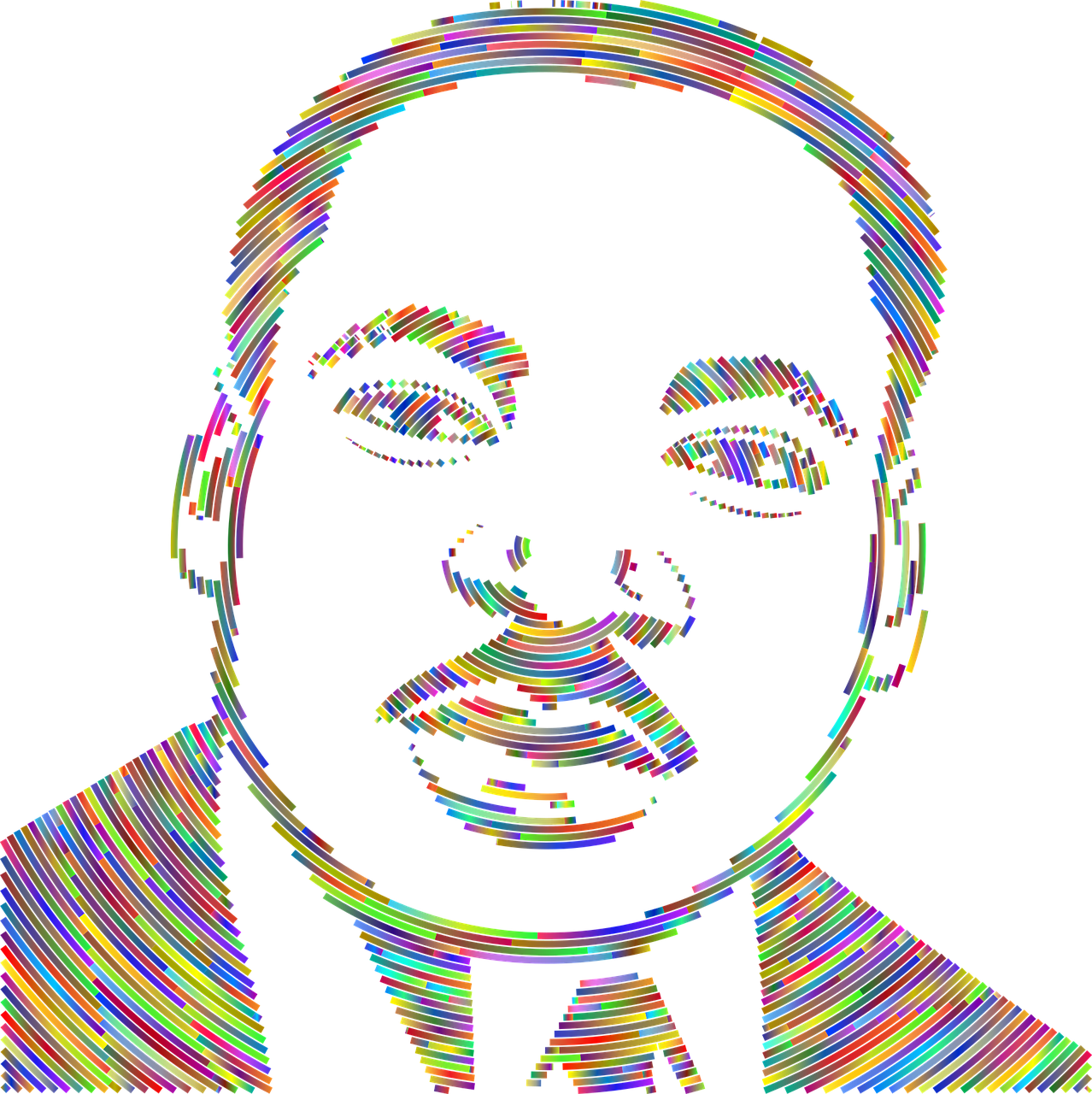On August 28, 1963, Martin Luther King Jr. stood before a massive crowd of supporters at the Lincoln Memorial in Washington, D.C. and delivered his iconic “I Have a Dream” speech. This monumental address not only became a defining moment in the Civil Rights Movement but also left an indelible mark on the history of American rhetoric. Dr. King’s powerful words, filled with passion and conviction, continue to resonate with audiences even today.
One of the key elements that made King’s speech so impactful was his masterful use of figurative language. The deliberate incorporation of metaphors, similes, and other literary devices helped to convey his message with vivid imagery and emotional intensity. In this blog post, we will explore the main focus of Dr. King’s speech and take a closer look at the figurative language he employed to inspire and motivate his audience.
So, grab a cup of coffee, settle in, and let’s dive into the captivating world of Dr. Martin Luther King Jr.’s “I Have a Dream” speech, where language becomes a powerful tool for change and equality.

Figurative Language in the “I Have a Dream” Speech
Understanding the Rhetorical Flourishes of Dr. Martin Luther King Jr.
Dr. Martin Luther King Jr.’s iconic “I Have a Dream” speech is not only a powerful call for equality and justice, but it is also a masterclass in the use of figurative language. King’s eloquent rhetoric and skillful employment of metaphors, similes, and other literary devices have made this speech a timeless work of art. In this section, we will delve into the various types of figurative language utilized by Dr. King in his historic speech.
Metaphors: Painted Pictures with Words
One of the most notable features of the “I Have a Dream” speech is the abundant use of metaphors, which enable Dr. King to convey complex ideas in a vivid and accessible manner. For instance, he speaks of “the sweltering summer of discontent” to describe the oppressive conditions faced by African Americans. This metaphor creates a powerful image in the minds of listeners, evoking feelings of suffocation and frustration.
Similes: Comparisons that Illuminate
In addition to metaphors, Dr. King also employs similes to enhance the impact of his message. By comparing two seemingly unrelated things, he manages to shed new light on familiar concepts. In his speech, King declares that “justice rolls down like waters and righteousness like a mighty stream.” This simile vividly captures the unstoppable force of justice and righteousness, effectively emphasizing their significance in the fight for equality.
Alliteration: Dancing with the Delight of Repetition
Dr. King harnesses the power of alliteration, the repetition of initial consonant sounds, to create a musical quality in his words. His use of alliteration not only adds a rhythmic flow to his speech but also helps key phrases to resonate strongly in the minds of listeners. One memorable example is the phrase “We will not be satisfied until justice rolls down like waters and righteousness like a mighty stream.” The repetition of the “s” sound creates a sense of solidarity and unity, reinforcing the importance of the struggle for justice.
Parallelism: Balancing Phrases for Emphasis
Parallelism, the art of balancing grammatical structures within a sentence or paragraph, is another rhetorical device employed by Dr. King in his speech. This technique adds a distinctive cadence and symmetry to his words, making them all the more memorable. Consider his repetition of the phrase “I have a dream” throughout the speech. By structuring his sentences in this way, King emphasizes the power and depth of his vision, leaving an indelible imprint on the hearts and minds of his audience.
Hyperbole: Exaggeration for Emphasis
To further emphasize his points, Dr. King occasionally makes use of hyperbole, using deliberate exaggeration for rhetorical effect. In his speech, he boldly proclaims, “This sweltering summer of the Negro’s legitimate discontent will not pass until there is an invigorating autumn of freedom and equality.” This hyperbolic statement vividly illustrates the urgency and magnitude of the struggle for civil rights, leaving no doubt as to its importance.
Personification: Giving Life to Abstract Concepts
Lastly, Dr. King employs personification to breathe life into abstract ideas, making them relatable and tangible. For instance, he famously states, “I have a dream that one day this nation will rise up and live out the true meaning of its creed.” By personifying the nation and its creed, King imbues them with a sense of purpose and agency, reminding his audience of their collective responsibility to uphold the ideals of equality and justice.
The “I Have a Dream” speech is a brilliant showcase of Dr. Martin Luther King Jr.’s rhetorical prowess and ability to use figurative language to captivate and inspire. Through metaphors, similes, alliteration, parallelism, hyperbole, and personification, King transformed his message into an enduring symbol of hope and progress. His words continue to resonate today, reminding us of the power of language to effect profound change.

FAQ: What figurative language is used in the I Have a Dream Speech?
What is the main focus of Dr. King’s speech
In his iconic “I Have a Dream” speech, the main focus of Dr. Martin Luther King Jr. was to advocate for racial equality and justice in America. He passionately spoke about the need for freedom and civil rights for African Americans, urging unity and progress towards a future where everyone is treated equally.
What figurative language is used in the “I Have a Dream” Speech
Dr. King’s speech is a powerful example of using figurative language to evoke emotions and paint vivid pictures in the minds of his audience. Some of the figurative language techniques he employed include:
Metaphors:
Metaphors are used to make comparisons between different objects or ideas. In his speech, Dr. King used metaphors to convey his message effectively. For instance, he famously stated, “America has given the Negro people a bad check, a check which has come back marked ‘insufficient funds.’” This metaphorical phrase highlights the injustice and inequality faced by African Americans.
Similes:
Similes are similar to metaphors but use “like” or “as” to compare two different things. One powerful simile in the speech is when Dr. King says, “We will not be satisfied until justice rolls down like waters and righteousness like a mighty stream.” This simile emphasizes the perseverance and determination of the civil rights movement.
Repetition:
Repetition is a rhetorical technique used for emphasis and reinforcement. Dr. King repeated the phrase “I have a dream” several times throughout his speech, emphasizing his vision for a future of equality and justice. This repetition creates a strong emotional impact on the audience.
What is the real dream of Martin Luther King
While most people are familiar with the famous line “I have a dream,” it is essential to understand the deeper meaning behind Dr. King’s dream. His real dream was not merely about ending racial discrimination; it was about creating a society where people would be judged based on their character rather than the color of their skin. Dr. King dreamt of a nation where all individuals, regardless of their race, would have equal opportunities and be treated with dignity and respect.
What is an example of a simile in the I Have a Dream Speech
An excellent example of a simile in the “I Have a Dream” speech is when Dr. King says, “This momentous decree came as a great beacon light of hope to millions of Negro slaves who had been seared in the flames of withering injustice.” By comparing the decree to a “beacon light of hope,” he vividly illustrates the significance and positive impact of the Emancipation Proclamation on African Americans.
In conclusion, Dr. Martin Luther King Jr.’s “I Have a Dream” speech is not only a historic and inspirational piece of oratory but also a powerful display of the effective use of figurative language. Through metaphors, similes, and repetition, Dr. King’s speech resonates with people to this day, continuing to inspire generations to fight for equality, dignity, and justice.
